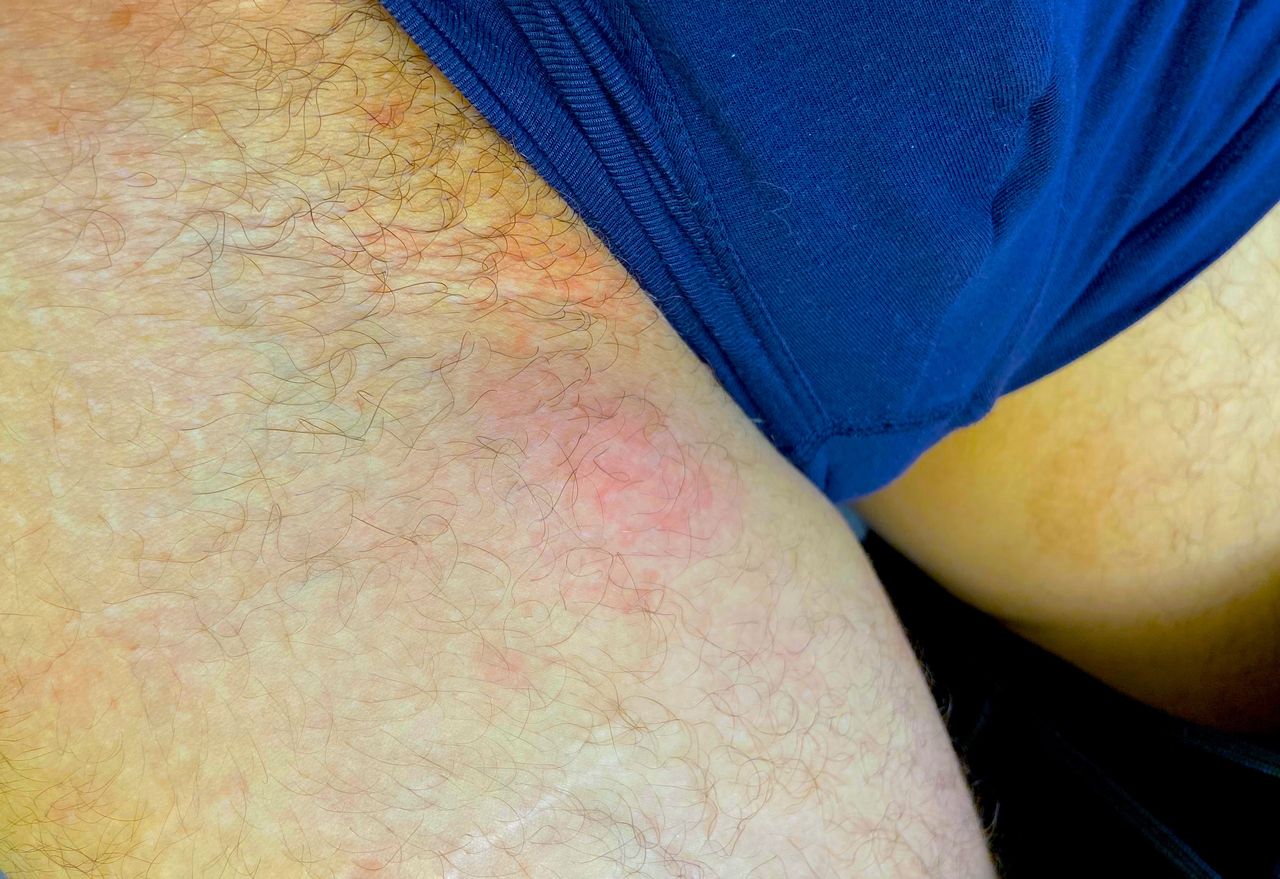
When it comes to the human body, there are countless fascinating aspects to explore. One of the intriguing components that often goes unnoticed is the inguinal lymph nodes. These lymph nodes, located in the inguinal area of the body, play a crucial role in the immune system’s functionality. From filtering harmful substances to aiding in the defense against infections, inguinal lymph nodes are a key part of our overall health and well-being.
In this article, we will delve into 17 enigmatic facts about inguinal lymph nodes that will not only expand our knowledge but also deepen our understanding of these remarkable structures. So, let’s embark on a journey of discovery and unravel the mysteries surrounding the inguinal lymph nodes.
Key Takeaways:
- Inguinal lymph nodes are like superheroes in your groin, fighting off infections and helping doctors detect cancer. They play a crucial role in keeping your lower body healthy and strong.
- When your inguinal lymph nodes swell or feel tender, it’s like they’re raising a red flag to warn you of a possible infection in your legs, feet, or genitals. They’re your body’s loyal defenders!
The Main Function of Inguinal Lymph Nodes
The Inguinal Lymph Nodes play a crucial role in the human body’s immune system. They are responsible for filtering and trapping harmful pathogens, such as bacteria or viruses, that may be present in the lower extremities, particularly in the groin area.
There are Multiple Inguinal Lymph Nodes
Within the inguinal region, there are several lymph nodes present on both sides of the body. These nodes are organized in a chain-like formation and are divided into superficial and deep inguinal lymph nodes.
Inguinal Lymph Nodes Help in Cancer Detection
One of the critical characteristics of the inguinal lymph nodes is their role in diagnosing and staging cancer. Doctors often examine these nodes to determine if cancer cells have spread from the original site to other parts of the body.
They Can Detect Infections in Lower Extremities
Inguinal lymph nodes are highly sensitive and can detect infections in the lower extremities, including the legs, feet, and genitals. Swelling or tenderness in the groin area may indicate an infection, prompting medical attention.
Inguinal Lymph Nodes Can Become Enlarged
When the immune system responds to an infection in the lower extremities, the inguinal lymph nodes can become enlarged. This enlargement is often the body’s way of indicating an ongoing immune response.
Inguinal Lymph Nodes Can Get Blocked
Inguinal lymph nodes can occasionally get blocked, causing the lymph fluid to build up and lead to swelling and discomfort in the groin area. This condition is known as lymphedema.
Inguinal Lymph Nodes Are Part of the Pelvic Lymph Node System
The inguinal lymph nodes are interconnected with other lymph nodes in the pelvic region, forming a complex network responsible for the drainage and immune response in the lower abdominal area.
They Play a Role in Genital Infections
Given their location in the groin, the inguinal lymph nodes are involved in combating and containing infections related to the genitals. This includes sexually transmitted infections (STIs) and other genital infections.
Inguinal Lymph Nodes May Swell During Pregnancy
Pregnancy can sometimes cause temporary swelling of the inguinal lymph nodes due to hormonal changes and increased blood flow in the pelvic region.
They Can Be Affected by Cancer in Nearby Organs
Cancerous tumors in organs near the inguinal lymph nodes, such as the bladder or genitals, can spread to these nodes and lead to their enlargement. Regular medical check-ups are crucial for early detection.
Inguinal Lymph Nodes Can Indicate Autoimmune Conditions
Swollen inguinal lymph nodes can be a potential sign of autoimmune conditions, such as rheumatoid arthritis or lupus, where the immune system mistakenly attacks healthy tissues.
They Can Be Examined and Palpated by Medical Professionals
During a physical examination, doctors can manually check the inguinal lymph nodes by gently palpating the groin area. Any abnormalities in size, tenderness, or texture can provide valuable diagnostic information.
Inguinal Lymph Nodes Can Be Subject to Inflammation
Inflammation of the inguinal lymph nodes, known as inguinal lymphadenitis, can occur due to various causes, such as infections, injury, or certain medications.
They Assist in the Body’s Immune Response
The inguinal lymph nodes play a critical role in the body’s immune response by filtering out and capturing pathogens, activating immune cells, and producing antibodies to neutralize foreign invaders.
Inguinal Lymph Nodes Are Connected to the Circulatory System
The inguinal lymph nodes receive lymphatic fluid from the lower extremities and pass it back into the circulatory system, ensuring a continuous flow and maintaining overall fluid balance in the body.
Pain in the Inguinal Lymph Nodes Can Indicate Infection
If the inguinal lymph nodes become tender or painful to touch, it can be an indication of an underlying infection in the lower extremities or nearby areas.
Inguinal Lymph Nodes Play a Role in Localized Immune Response
When an infection occurs in the lower extremities, the inguinal lymph nodes respond by initiating a localized immune response to contain and eliminate the pathogens.
Conclusion
Inguinal lymph nodes are an essential part of the human anatomy that play a crucial role in immune defense and lymphatic drainage in the lower body. Through their location and function, they provide numerous benefits to our overall health and well-being.
This article explored 17 enigmatic facts about inguinal lymph nodes, shedding light on their structure, location, functions, and potential health concerns. We discovered how these lymph nodes filter lymph fluid, trap harmful pathogens, and aid in the detection and treatment of various diseases. Additionally, the article highlighted the importance of maintaining a healthy lymphatic system and seeking medical attention if any issues arise.
Understanding the intricacies of inguinal lymph nodes allows us to appreciate the complexity of our bodies and take better care of our health. By staying informed, we can ensure that our lymphatic system functions optimally, supporting our immune system and overall well-being.
FAQs
1. What are inguinal lymph nodes?
Answer: Inguinal lymph nodes are a group of lymph nodes located in the inguinal region of the body, in the groin area.
2. What is the function of inguinal lymph nodes?
Answer: Inguinal lymph nodes play a vital role in filtering lymph fluid, trapping harmful pathogens, and initiating an immune response to protect the body.
3. Are inguinal lymph nodes prone to swelling and enlargement?
Answer: Yes, inguinal lymph nodes can swell and become enlarged due to various reasons, such as infection, inflammation, or underlying medical conditions.
4. How can I keep my inguinal lymph nodes healthy?
Answer: Maintaining a healthy lifestyle, practicing good hygiene, and promptly addressing any signs of infection or inflammation can help keep your inguinal lymph nodes and the entire lymphatic system in optimal condition.
5. When should I seek medical attention for swollen inguinal lymph nodes?
Answer: It is recommended to consult a healthcare professional if you experience persistent or painful swelling of the inguinal lymph nodes, as it may indicate an underlying health issue that requires medical attention.
Exploring inguinal lymph nodes unveils their enigmatic nature and vital role in our bodies. Dive deeper into the fascinating world of the lymphatic system to understand how it maintains overall health and well-being. Discover how a robust immune response keeps invaders at bay and protects against various ailments.
Was this page helpful?
Our commitment to delivering trustworthy and engaging content is at the heart of what we do. Each fact on our site is contributed by real users like you, bringing a wealth of diverse insights and information. To ensure the highest standards of accuracy and reliability, our dedicated editors meticulously review each submission. This process guarantees that the facts we share are not only fascinating but also credible. Trust in our commitment to quality and authenticity as you explore and learn with us.


